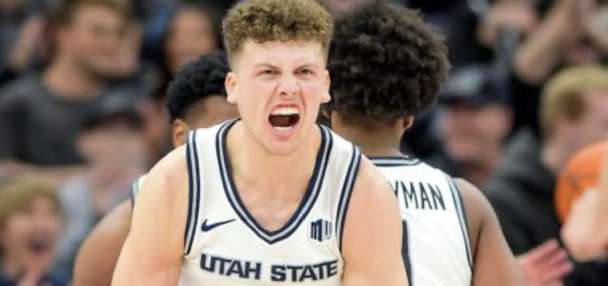Estimated read time: 4-5 minutes
- Michael Kesselring, traded from the Oilers, excels with Utah Hockey Club.
- Oilers' trade for Nick Bjugstad now seems short-sighted as Kesselring thrives.
- Kesselring adapts to reduced ice time, learning from veteran Ian Cole.
EDMONTON, Alberta — Utah Hockey Club defenseman Michael Kesselring almost serves as a cautionary tale in Central Alberta.
Two seasons ago, the Edmonton Oilers — looking for some depth at center for a playoff run — traded Kesselring and a third-round pick to Arizona for Nick Bjugstad.
It was seen as a good move at the time. It was cheap (money-wise), Kesselring had only been a sixth-round pick, and the Oilers had a stable of six defensemen. It was the type of move contenders usually make; passing off prospects for a chance to win immediately.
That deal, though, has aged rather poorly.
Not only did Bjugstad re-sign with the then-Arizona Coyotes as a free agent, but Kesselring has grown into a top-four-caliber defenseman in the last two years. As for the defensive depth in Edmonton, well, that looks much different now, too.
So Kesselring is looking more and more like the one that got away in hockey-crazed Edmonton.
"I always wanted to be an Oiler," Kesselring said. "It was unreal getting drafted here. My dad's Canadian and it meant a lot to him, too. So it was good. I put in good time down in the AHL to kind of earn an opportunity, and it didn't work out."
With the benefit of hindsight, it seems the Oilers should have practiced more patience two seasons ago.
Ironically, Kesselring is learning that same virtue over the last few weeks.
In the first 56 games of the season, Kesselring averaged nearly 19 minutes of ice time per game as he settled into a top-four role due to long-term injuries to John Marino and Sean Durzi.
It wasn't all that dissimilar to the situation he found himself in when he first got traded to the Utah/Arizona franchise. After essentially being blocked from the NHL in Edmonton, he had a long runway in Arizona. He quickly made his NHL debut following the trade and then became a full-time NHL player last season.
"It was kind of the most exciting time of my career, honestly, just to try to take that next step and be a full-timer," Kesselring said.
He reached that point last season in Arizona. In Utah, he took it one step further.

With Marino and Durzi out, he seized another opportunity and proved he could handle being on one of the team's top two pairs.
"He's good at everything," Utah Hockey Club coach André Tourigny said. "He skates well, hell of a shot, great passer, can carry the puck out of trouble, defends really well, he has good length, he's strong in his battle, he's really good at a one-on-one — he can do it all."
He has plenty of tools that he can grow into as he continues his development. But his open runway finally ran out of road in February.
Durzi and Marino both returned from injury, cutting into his ice time. He went from being an everyday top-four defenseman with plenty of power-play chances to seeing his shifts slashed.
Best for the team? Of course. Tough to swallow? You bet. There needed to be a mental adjustment, and for help with that Kesselring turned to one of his veteran teammates: Ian Cole.
"He's been like a father figure," Kesselring said.
Cole, who didn't seem to love having the term "father" thrown his way by a teammate ("That's nice. Thank you for that," he deadpanned), said the two have had lots of talks focused around how best to handle the situation. Cole, 36, has been around the league a few times and has seen his playing time fluctuate throughout his career.
"He's playing some less minutes now, and that's OK," Cole said. "It's OK to focus on quality over quantity."
Cole said in a perfect world the six defensemen would each get 20 minutes, but there are power plays, penalty kills and other more offensive- or defensive-centered moments. It's not a tiered system, he shared with Kesselring, it's about optimizing everyone's time on the ice.
"We've talked a lot about it, and just kind of how to handle it and how to approach it mentally," Cole said. "And he's doing a great job, he's playing his best hockey the past two weeks since Durzi's been back."
Kesselring is starting to see some positives in the shorter stints. He knows he's a quicker defenseman, so with fewer shifts, he has more energy on every shift for faster bursts to make plays. And since this is his first time in a playoff chase, he's getting to feel that heightened pressure in smaller doses.
"You can feel the magnitude of the games a little bit more," he said. "So getting used to that and feeling that for the first time has been really fun."
Even if it has meant a little less time on the ice. In the end, though, he thinks the experience will help him be a better player.
"It's good for me to go through it mentally and learn how to get mentally tougher and be engaged in the game when you're not playing as many minutes," he said.
And if nothing else, it's more than he ever got in Edmonton.









